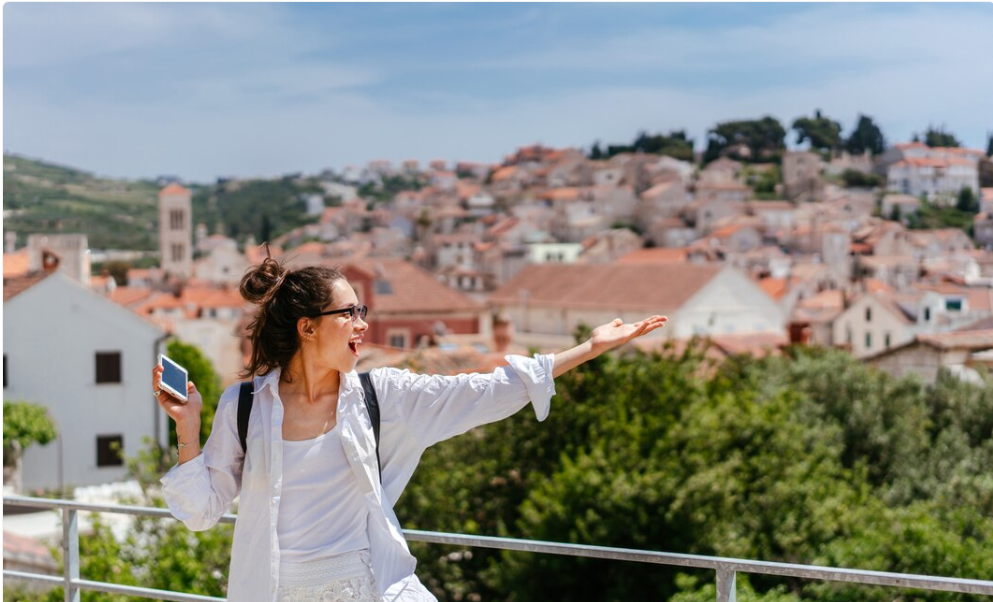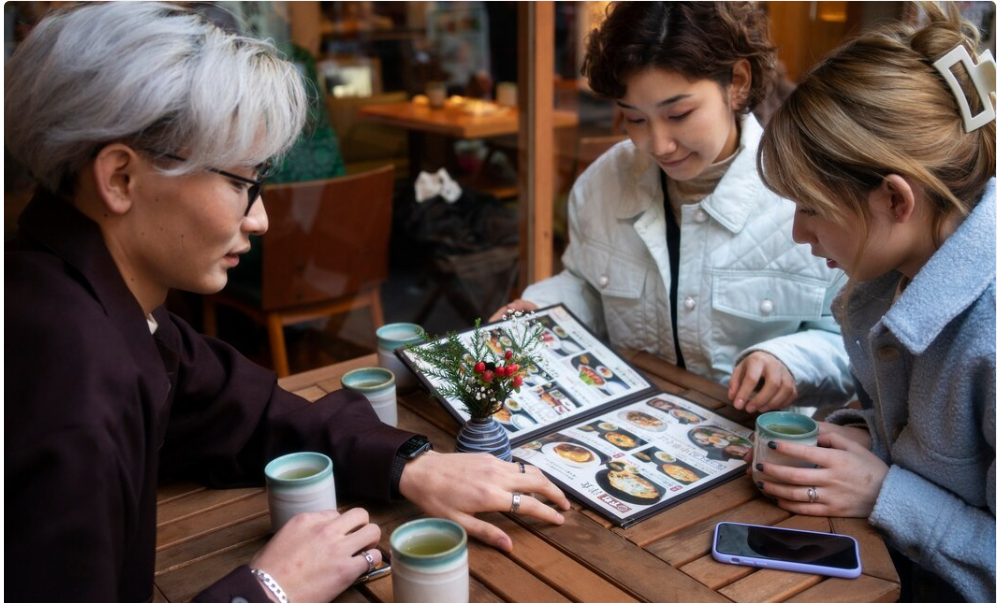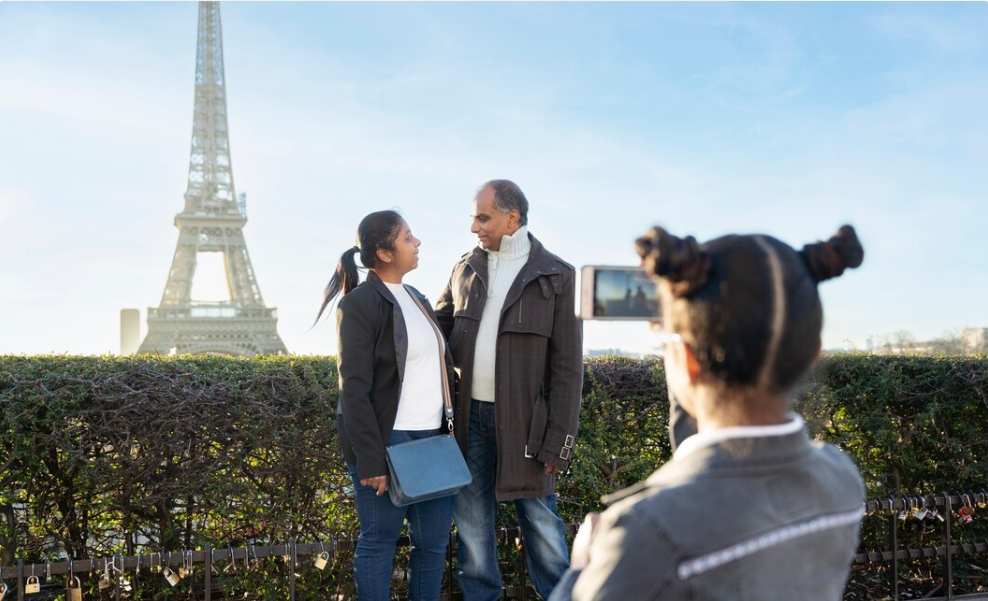
by Dulce Navarro | Apr 18, 2025 | Countries, Culture, Europe, Lifestyle, Travel
Off the Beaten Path Destinations in Europe You Need to Add to Your Bucket List
Europe is renowned for its iconic destinations — Paris, Rome, London — but beyond the crowds and tourist hotspots lies a wealth of hidden gems waiting to be explored. Whether you’re a seasoned traveler or planning your first European adventure, exploring lesser-known locales can provide a more intimate, authentic, and enriching experience. Here are some off-the-beaten-path European destinations every explorer should add to their travel bucket list.
1. Kotor, Montenegro
Nestled along the Adriatic Sea, Kotor is a medieval walled city surrounded by dramatic mountains and turquoise waters. A UNESCO World Heritage Site, its charming Old Town features cobblestone streets, ancient churches, and a fortress hike offering sweeping views of Kotor Bay. The city’s quiet sophistication and natural beauty make it an ideal escape from more commercialized coastal spots.
2. Český Krumlov, Czech Republic
This fairytale town in southern Bohemia is often overshadowed by Prague, but it offers equal charm with fewer tourists. With its well-preserved Baroque and Renaissance architecture, Český Krumlov’s historic center and castle complex are perfect for cultural immersion. Wander the narrow alleys, float down the Vltava River, or enjoy a performance at the castle’s rotating theatre stage.
3. Puglia, Italy
Italy’s southern region of Puglia boasts whitewashed towns, ancient olive groves, and an extensive coastline along the Adriatic and Ionian seas. Towns like Alberobello, with its iconic trulli houses, and Lecce, known as the “Florence of the South,” offer rich history, stunning architecture, and exceptional cuisine without the crowds of Tuscany or the Amalfi Coast.
4. Colmar, France
Located in the Alsace region near the German border, Colmar is a colorful town that seems straight out of a storybook. Its half-timbered houses, flower-lined canals, and cobblestone streets are a photographer’s dream. Colmar also boasts excellent Alsatian wines and a delightful food scene, making it a peaceful and picturesque alternative to Paris or Lyon.
5. Ghent, Belgium
Often overlooked in favor of nearby Bruges, Ghent offers a vibrant mix of medieval architecture, modern creativity, and youthful energy thanks to its university population. The Gravensteen Castle, Saint Bavo’s Cathedral, and lively canal-side cafés provide a rich cultural experience without overwhelming crowds.
6. Meteora, Greece
Meteora’s stunning rock formations topped with centuries-old monasteries create one of the most otherworldly landscapes in Europe. A UNESCO World Heritage Site, this central Greek destination combines natural wonder with spiritual depth. Hiking trails, panoramic viewpoints, and serene silence make it ideal for both adventure seekers and introspective travelers.
7. Dinant, Belgium
Set dramatically along the Meuse River and framed by towering cliffs, Dinant is a hidden gem that combines nature and history. Famous as the birthplace of Adolphe Sax, inventor of the saxophone, this small town is rich in character and charm. The Collegiate Church of Notre-Dame and the cliffside Citadel are highlights, and river cruises provide unforgettable views.
8. Gjirokastër, Albania
This UNESCO-listed city is one of Albania’s best-kept secrets. Gjirokastër, known as the “City of Stone,” boasts stunning Ottoman architecture, a hilltop castle, and a vibrant arts scene. It’s also a gateway to exploring southern Albania’s pristine beaches and mountainous landscapes. Hospitality here is warm, and tourism still feels refreshingly low-key.
9. Valletta, Malta
While Malta is gaining in popularity, its capital Valletta remains a quieter, cultural alternative to more traditional southern European destinations. This fortified city, rich in Baroque architecture and Mediterranean charm, offers historical intrigue, sea views, and modern gastronomy. Its compact size makes it ideal for long weekend getaways.
10. Hallstatt, Austria
Hallstatt is a lakeside village nestled in the Austrian Alps that exudes tranquility and postcard-perfect beauty. Its pastel houses and 16th-century churches sit on the edge of Hallstätter See, mirrored in the still water. Known for salt mining and UNESCO recognition, Hallstatt is ideal for those seeking peace, nature, and an enchanting escape from modern bustle.
Travel Smart, Travel Deeper
Choosing destinations off the typical tourist trail doesn’t mean sacrificing comfort or experiences — in fact, it often leads to more genuine connections and memorable stories. As you plan your next European getaway, consider these lesser-known but equally captivating places that offer luxury, culture, and adventure in equal measure.
Stay Connected for More Travel and Lifestyle Inspiration.
For more insights into travel, culture, and lifestyle tips, follow me on Instagram @salvadorordorica. If you’re seeking professional translation and localization services to enhance your global ventures, visit The Spanish Group — your trusted partner in bridging cultures worldwide.

by Dulce Navarro | Apr 17, 2025 | Countries, Culture, Europe, Lifestyle, Traditions, Travel
Preserving Traditions in a Digital Age: A Look at Global Efforts
In a world where rapid technological advancement defines the way we live, work, and connect, cultural traditions risk fading into obscurity. Yet around the globe, a diverse set of communities, organizations, and governments are working tirelessly to ensure that ancient customs and cultural heritage continue to thrive. This post explores the dynamic intersection between tradition and technology, and highlights inspiring efforts to preserve cultural identity in our increasingly digital world.
The Digital Challenge to Cultural Traditions
Digital transformation has reshaped every aspect of society—from how we communicate to how we consume information. While this shift has brought numerous benefits, it also poses a threat to oral histories, artisanal crafts, and cultural rituals that rely on in-person transmission and hands-on experience. The question many communities face is: how do we adapt without losing our roots?
Technology as a Preservation Tool
Interestingly, technology itself is playing a vital role in cultural preservation. Digital archiving, virtual reality experiences, and interactive online platforms are being used to document and share traditions worldwide. For example:
- UNESCO’s Memory of the World program digitally archives historical documents and artifacts to safeguard cultural heritage.
- Google Arts & Culture offers immersive exhibits of museums, traditional dances, and ancient texts from across the globe.
- VR and AR technology allows users to experience cultural festivals or explore historical landmarks without leaving home.
Grassroots Efforts to Keep Traditions Alive
At a local level, communities are also stepping up. Language preservation projects have turned to mobile apps and YouTube channels to teach endangered languages. Traditional craftsmen and women are showcasing their work on Instagram and Etsy, gaining recognition and support from global audiences.
Education and Cultural Literacy in the Digital Age
Integrating traditional knowledge into modern education systems has become another important strategy. Schools in various countries are incorporating indigenous storytelling, local history, and folk art into their curricula. Online platforms like Coursera and Khan Academy are also offering courses on world cultures and ancient philosophies, making them accessible to younger generations worldwide.
The Role of Governments and NGOs
Many governments have introduced initiatives to protect intangible cultural heritage. Japan, for instance, designates certain artisans as “Living National Treasures” to ensure the transmission of traditional skills. NGOs like Cultural Survival and Endangered Languages Project support indigenous communities in documenting and maintaining their cultural practices.
Balancing Innovation with Authenticity
One of the key challenges in preserving traditions in a digital era is maintaining authenticity. While online tools are powerful, they can also dilute or misrepresent cultural practices. It’s crucial that digitization efforts involve local voices and that technology complements rather than replaces real-world engagement.
Looking Forward
As we navigate the future, embracing both innovation and tradition will be essential. Cultural heritage gives us identity, belonging, and continuity. By thoughtfully leveraging technology, we can ensure these priceless elements of human history endure for generations to come.
Conclusion
Preserving traditions in the digital age is not about resisting change—it’s about evolving mindfully. Around the world, people are finding creative ways to honor their heritage while engaging with modern tools. Their efforts remind us that culture is not static; it’s a living, breathing part of who we are.
Stay Connected for More Travel and Lifestyle Inspiration. For more insights into travel, culture, and lifestyle tips, follow me on Instagram @salvadorordorica. If you’re seeking professional translation and localization services to enhance your global ventures, visit The Spanish Group — your trusted partner in bridging cultures worldwide.

by Dulce Navarro | Apr 17, 2025 | Culture, Europe, Languages, Lifestyle, Residency, Travel, Work
How to Overcome Language Barriers as a Digital Nomad
In today’s globally connected world, digital nomads are redefining what it means to live and work abroad. However, one of the most common challenges they face is navigating language barriers. Communication is central to both professional success and cultural integration, and a lack of fluency can lead to missed opportunities and unnecessary frustrations. For company directors who frequently travel or manage international teams, understanding how to effectively overcome these barriers is key to thriving in a foreign environment.
Embrace the Basics Before You Travel
Before arriving in a new country, it’s beneficial to learn the basic phrases of the local language. Greetings, directions, numbers, and polite expressions go a long way in establishing rapport. Numerous language apps like Duolingo, Babbel, or Rosetta Stone offer quick-start lessons tailored for travelers. These tools help build confidence and reduce dependence on English in everyday scenarios.
Use Translation Tools Wisely
While not a substitute for language learning, digital translation tools can be lifesavers in many situations. Apps such as Google Translate and DeepL allow users to translate text, voice, or even images in real time. Carrying a phrasebook app or a mobile dictionary can also help in offline situations. For business settings, consider using professional translation services for documents and legal materials to ensure accuracy and professionalism.
Leverage Local Language Classes
Immersing yourself in the local language through formal classes is one of the most effective ways to gain fluency. Many cities popular among digital nomads—like Barcelona, Paris, or Bali—offer short-term or intensive language courses tailored for foreigners. This not only enhances your language skills but also provides social opportunities and cultural insight.
Build Relationships with Locals
Building genuine relationships with locals is an invaluable step in overcoming language barriers. Engaging in conversations, asking questions, and expressing interest in their culture encourages reciprocal communication. Even if your grammar isn’t perfect, the effort is often appreciated and can lead to faster learning and deeper community integration.
Work with Bilingual Professionals
When possible, collaborate with bilingual partners or hire interpreters for critical meetings. In business environments, this ensures that both parties clearly understand each other, reducing the risk of miscommunication. It’s especially important in legal, medical, or financial contexts, where accuracy is paramount.
Use Visual Communication
When words fail, visuals succeed. Gestures, diagrams, maps, and pictograms are excellent tools for communicating basic concepts. Even in professional settings, using slides, infographics, or diagrams during presentations can help bridge language gaps and clarify your message.
Adapt Your Communication Style
Speaking slowly, avoiding idioms, and using simple vocabulary can drastically improve understanding. Digital nomads should be mindful of cultural communication differences as well—what may be considered polite or normal in one culture may be misinterpreted in another. It’s often helpful to confirm understanding by summarizing key points and asking open-ended questions.
Stay Patient and Open-Minded
Learning a language and integrating into a new culture is a process that takes time. Frustrations are normal, but staying patient and maintaining a sense of humor can ease the transition. Celebrate small wins, such as ordering food successfully or having a casual chat with a neighbor, as milestones in your journey.
Professional Translation and Localization Services
For digital nomads who run international businesses or manage global teams, partnering with a professional translation agency can streamline operations. Services like The Spanish Group offer certified translations, website localization, and multilingual marketing materials that help businesses communicate effectively across borders.
Conclusion
Overcoming language barriers is not just about fluency—it’s about connection, adaptability, and respect for local cultures. By embracing tools, strategies, and local experiences, digital nomads can transform language challenges into meaningful opportunities for growth and collaboration.
Stay Connected for More Travel and Lifestyle Inspiration. For more insights into travel, culture, and lifestyle tips, follow me on Instagram @salvadorordorica. If you’re seeking professional translation and localization services to enhance your global ventures, visit The Spanish Group — your trusted partner in bridging cultures worldwide.

by Dulce Navarro | Apr 16, 2025 | Countries, Culture, Europe, Lifestyle, Residency, Travel, Work
Everything You Need to Know About Digital Nomad Visas in France
France has long captivated travelers with its art, culture, and lifestyle. But now, the country is becoming increasingly attractive to digital nomads and remote workers seeking a temporary yet immersive European base. With changing work environments and the rise of remote professions, digital nomad visas are gaining popularity — and France is no exception. If you’re a professional looking to live and work in France legally while maintaining employment elsewhere, this guide is for you.
What is a Digital Nomad Visa?
A digital nomad visa allows remote workers, freelancers, and self-employed professionals to live in a foreign country while working for clients or companies based outside that country. Unlike a tourist visa, which usually limits your stay to 90 days, a digital nomad visa often provides longer and renewable residency options, allowing you to enjoy life abroad without legal complications.
Is There a Digital Nomad Visa for France?
While France does not have a dedicated “digital nomad visa” by name, it offers several visa options that digital nomads can take advantage of, including:
- Long-Stay Visa (Visa de Long Séjour): Ideal for freelancers or self-employed individuals. This visa allows you to stay in France for more than 90 days and can be renewed.
- Profession Libérale Visa: Designed for those who want to work as a freelancer or operate a business in France.
- Talent Passport: Suitable for highly skilled professionals, especially in tech, science, and business sectors.
Eligibility Criteria
The exact requirements vary depending on the type of visa you apply for, but common eligibility criteria include:
- Proof of sufficient income or financial resources
- Valid health insurance covering your stay in France
- A clean criminal background check
- Documentation supporting your professional activity (contracts, client lists, portfolios)
How to Apply
The application process typically involves several steps:
- Determine the best visa option for your situation
- Gather the required documentation
- Apply through your local French consulate or embassy
- Attend a visa interview if necessary
- Wait for visa approval and travel to France
Benefits of Living in France as a Digital Nomad
Choosing France as your base offers a wealth of benefits:
- Access to high-speed internet and coworking spaces in major cities
- Excellent healthcare system
- Rich cultural experiences and scenic travel opportunities
- Proximity to other European countries for easy weekend getaways
- A strong expat community to connect and network with
Challenges to Be Aware Of
Living in France as a digital nomad isn’t without its challenges. Consider the following:
- Language barriers, especially in rural areas
- Complex administrative processes and paperwork
- Cost of living in cities like Paris can be high
- Strict tax regulations for those staying long-term
Tips for a Smooth Transition
- Take French language classes before and during your stay
- Work with a relocation specialist or visa consultant
- Use expat forums and local networks to get insider advice
- Keep all documents well-organized and digitized
Future Outlook
France is actively working to attract international talent and entrepreneurs. While there’s no official digital nomad visa yet, discussions continue within policy circles. The current visa options provide a solid foundation for professionals seeking a semi-permanent European lifestyle.
Conclusion
Living and working in France as a digital nomad is entirely feasible with the right visa and preparation. From world-class infrastructure to an enriching lifestyle, France remains a top choice for professionals looking to blend productivity with cultural exploration.
Stay Connected for More Travel and Lifestyle Inspiration. For more insights into travel, culture, and lifestyle tips, follow me on Instagram @salvadorordorica. If you’re seeking professional translation and localization services to enhance your global ventures, visit The Spanish Group — your trusted partner in bridging cultures worldwide.

by Dulce Navarro | Apr 15, 2025 | Countries, Culture, Lifestyle, Travel
How to Plan the Ultimate European Getaway: Combining Luxury, Culture, and Adventure
Planning a European getaway can be both thrilling and overwhelming. With centuries of history, diverse cultures, luxury accommodations, and a landscape perfect for exploration, Europe offers something for every type of traveler. For business executives and professionals, combining comfort, culture, and excitement is key to crafting the perfect journey. Here’s how to plan an unforgettable European experience that strikes a balance between luxury, cultural immersion, and adventure.
1. Define Your Travel Priorities
Begin by outlining your primary goals for the trip. Are you looking to unwind in serene luxury, immerse yourself in history and art, or seek thrills in outdoor adventures? Defining your priorities will help you narrow down destinations and design a well-balanced itinerary.
2. Choose Your Destinations Wisely
Europe’s diversity allows for a multi-stop itinerary that caters to various interests:
- Luxury: Paris, Milan, Monte Carlo
- Culture: Rome, Vienna, Prague
- Adventure: Interlaken, Chamonix, the Dolomites
Mixing urban sophistication with countryside charm offers a rich and varied experience.
3. Invest in High-End Accommodations
Splurging on luxurious hotels or boutique resorts can elevate your entire trip. Many European cities are home to iconic hotels like The Ritz in Paris or Hotel Principe di Savoia in Milan, known for their exceptional service and exquisite design. For a more intimate setting, consider booking a luxury villa in Tuscany or a château in the French countryside.
4. Embrace Cultural Experiences
Europe is a treasure trove of culture. Make time for museum visits, historical walking tours, local performances, and wine tastings. Private guides can offer tailored insights and behind-the-scenes access to heritage sites, giving you a more profound appreciation for each destination.
5. Explore Culinary Excellence
One of the highlights of European travel is its cuisine. Dine at Michelin-starred restaurants, indulge in regional specialties, and consider booking a culinary tour or cooking class. Cities like San Sebastián, Florence, and Lyon offer unforgettable gastronomic experiences.
6. Add an Element of Adventure
Incorporate outdoor or adrenaline-filled activities to balance leisure with excitement. Options include skiing in the Alps, paragliding over Lake Annecy, hiking the Cinque Terre, or sailing along the Amalfi Coast. Tailor these activities to your energy levels and interests.
7. Plan with Convenience in Mind
Traveling across Europe can be seamless with first-class train travel, private car transfers, or even short flights. Apps and travel agencies specializing in luxury European travel can manage your bookings and transitions, ensuring your experience is smooth from start to finish.
8. Stay Connected and Secure
Keep your communication lines open with international roaming plans or local SIM cards. Utilize services that offer real-time travel assistance and ensure you’re covered with premium travel insurance for peace of mind throughout your journey.
9. Timing Is Everything
Consider traveling during the shoulder seasons—spring and fall—for fewer crowds and better availability at high-end accommodations. Many festivals and cultural events also occur during these times, adding a unique flavor to your itinerary.
10. Work with Experts
For a trip that runs like clockwork, consider working with a professional travel concierge. These experts can tailor your itinerary based on your preferences and handle logistics, restaurant reservations, and exclusive experiences that aren’t easily accessible to the general public.
Conclusion
Creating a dream European getaway that intertwines luxury, culture, and adventure is entirely possible with thoughtful planning. Prioritize what matters most to you, and be open to both indulgence and exploration. Europe’s charm lies in its ability to surprise and delight at every corner.
Stay Connected for More Travel and Lifestyle Inspiration. For more insights into travel, culture, and lifestyle tips, follow me on Instagram @salvadorordorica. If you’re seeking professional translation and localization services to enhance your global ventures, visit The Spanish Group — your trusted partner in bridging cultures worldwide.

by Dulce Navarro | Apr 14, 2025 | Culture, Europe, Lifestyle, Traditions, Work
Mastering Business Etiquette in France: What Every Professional Should Know
Doing business in France can be an enriching experience, but it also requires an understanding of local etiquette and professional culture. For executives, entrepreneurs, or professionals looking to succeed in French business environments, mastering cultural nuances is essential. This guide explores key etiquette tips and insights for navigating business in France with confidence and respect.
The Importance of Formality
French business culture places high value on formality and professionalism. From dress code to communication style, formality is often perceived as a sign of respect and competence. When meeting French professionals for the first time, address them by their title and last name unless invited to do otherwise. Business attire should be conservative and elegant—men often wear suits, and women are expected to dress in a polished, understated manner.
Mastering the French Greeting
In business settings, a firm handshake is the standard greeting. Make eye contact and keep the handshake brief yet confident. It is important to avoid overly enthusiastic gestures or prolonged contact. While the famous “la bise” (cheek kissing) is a common greeting in social contexts, it is generally not used in professional environments unless there is a strong pre-existing relationship.
Communication Style
French professionals are known for their articulate and intellectual communication. Meetings may begin with small talk, but business discussions typically focus on logic, structure, and reasoning. Expect detailed arguments and critical questions—these are not signs of disagreement but a way to assess ideas thoroughly. Speaking French, even if just a few phrases, shows effort and respect, though many professionals also speak English fluently, especially in international industries.
Punctuality and Scheduling
Being on time is important, though there is a slight tolerance for delays in certain industries. However, punctuality is still considered a mark of professionalism. Business meetings are often scheduled well in advance, and it’s customary to confirm appointments via email. Avoid scheduling meetings during July and August, as many professionals take extended summer holidays.
Business Meals and Hospitality
Business meals are a key part of relationship-building in France. Lunches can be long and may not always involve business discussions until later in the meal. Table manners are crucial: keep your hands visible (resting wrists on the table), avoid placing elbows on the table, and never start eating until the host gives the signal. If you’re invited to someone’s home or a formal event, bring a small gift such as flowers or wine (but avoid chrysanthemums, as they are associated with funerals).
Decision-Making and Hierarchy
French companies often have a hierarchical structure. Decisions are typically made at the top and may take longer than expected. Respect for hierarchy is important, and it’s customary to follow formal lines of communication. It’s essential to be patient and to show respect for the process and those in decision-making positions.
Written Communication
Business emails and written correspondence in France follow a more formal structure than in some other countries. Start with a formal greeting, such as “Monsieur” or “Madame,” followed by the person’s last name. The content should be clear, concise, and polite, with a formal closing line like “Je vous prie d’agréer, Madame, Monsieur, l’expression de mes salutations distinguées.” Keep your language professional, and avoid using first names or casual expressions unless the relationship has become more personal over time.
Understanding Work-Life Balance
Work-life balance is highly valued in France. The 35-hour work week, extensive vacation time, and protected employee rights reflect a strong commitment to personal time. When scheduling meetings or sending messages, be mindful of evenings, weekends, and public holidays. Demonstrating respect for your colleagues’ time outside of work helps build mutual respect and cooperation.
Adapting to French Corporate Culture
Each industry and company may have its own cultural variations, but in general, the French take pride in their intellectual heritage, value thoughtful dialogue, and maintain a sense of decorum in professional settings. By adapting to these cultural norms, professionals can build trust, avoid miscommunication, and create lasting business relationships in France.
Final Thoughts
Mastering business etiquette in France requires cultural awareness, patience, and attention to detail. It’s not just about rules—it’s about demonstrating respect for a country’s traditions and business practices. By doing so, you enhance your professional image and increase your chances of success in one of Europe’s most influential business landscapes.
Stay Connected for More Travel and Lifestyle Inspiration
For more insights into travel, culture, and lifestyle tips, follow me on Instagram @salvadorordorica. If you’re seeking professional translation and localization services to enhance your global ventures, visit The Spanish Group — your trusted partner in bridging cultures worldwide.






